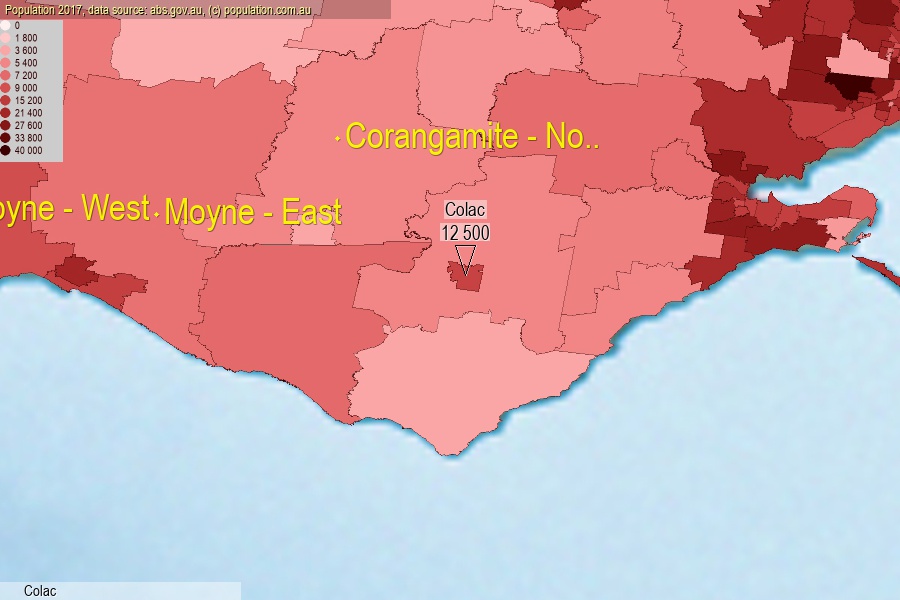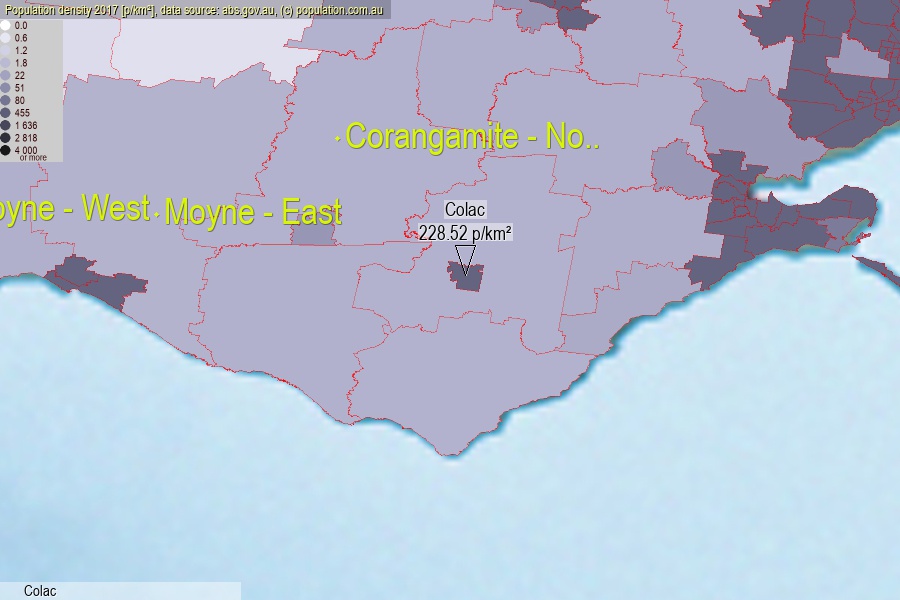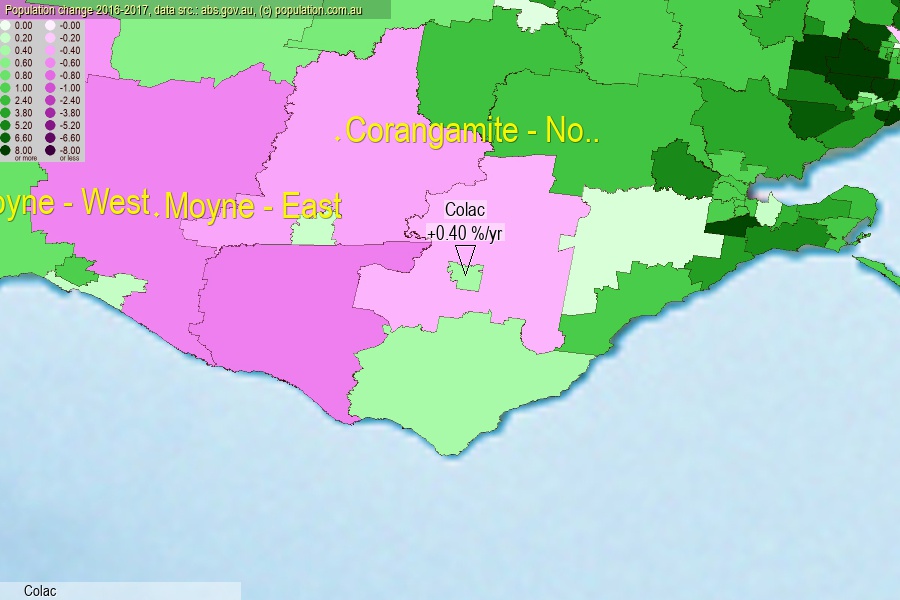 population.com.au
population.com.auLast official estimated population of Colac (as Statistical Area Level 2) was 12 500 people (on 2017-06-30)[2]. This was 0.05% of total Australian population and 0.194% of VIC population. Area of Colac is 54.70 km², in this year population density was 228.52 p/km² . If population growth rate would be same as in period 2016-2017 (+0.4%/yr), Colac population in 2025 would be 12 907. [0]



Click to enlarge. Colac is located in the center of the images.
Population [people], population density [p./km²] and population change [%/year] [2]
View borders » (new window) [4]
[2001-2002] +0.12 %/Yr.
[2002-2003] +0.68 %/Yr.
[2003-2004] -0.14 %/Yr.
[2004-2005] +0.30 %/Yr.
[2005-2006] -0.21 %/Yr.
[2006-2007] +0.56 %/Yr.
[2007-2008] +0.62 %/Yr.
[2008-2009] +0.89 %/Yr.
[2009-2010] +1.10 %/Yr.
[2010-2011] +0.78 %/Yr.
[2011-2012] +0.68 %/Yr.
[2012-2013] +0.80 %/Yr.
[2013-2014] +0.70 %/Yr.
[2014-2015] +0.75 %/Yr.
[2015-2016] +0.92 %/Yr.
[2016-2017] +0.40 %/Yr.
[0] Calculated with linear interpolation from officially estimated population
[1] Read more about SA2 and Australian Statistical Geography Standard (ASGS) on abs.gov.au
[2] Population data from Australian Bureau of Statistics (Population and density: 2017; change: 2016-2017)
[3] Digital Boundaries: Australian Statistical Geography Standard (ASGS) 2016.
[4] Border coordinates are simplifyed using Ramer-Douglas-Peucker algorithm.